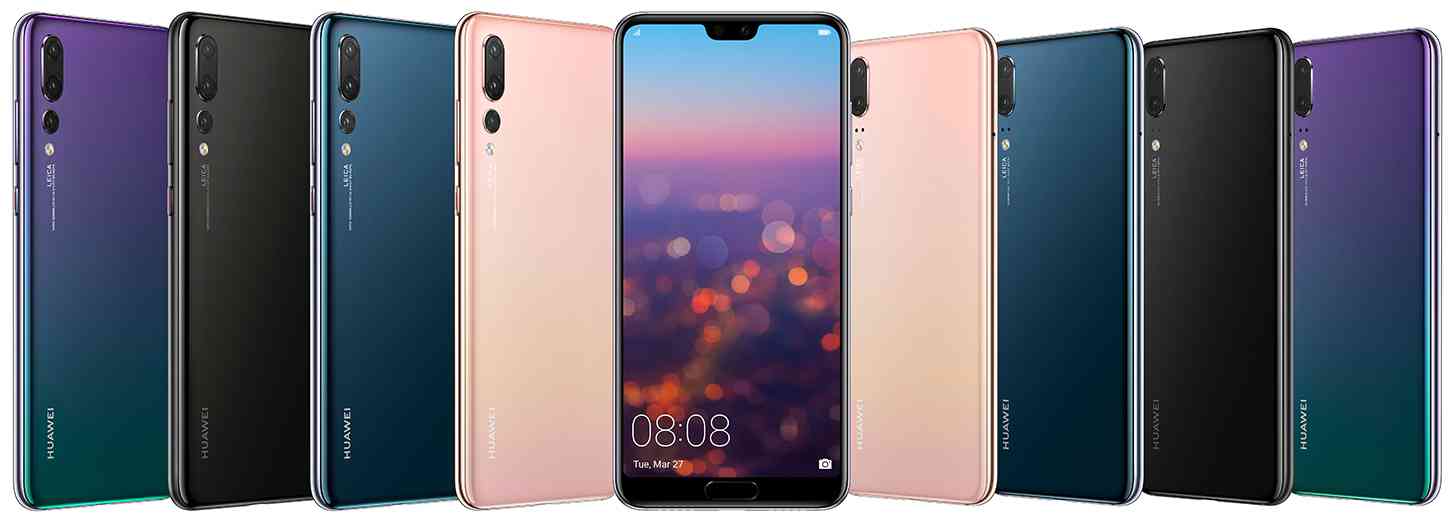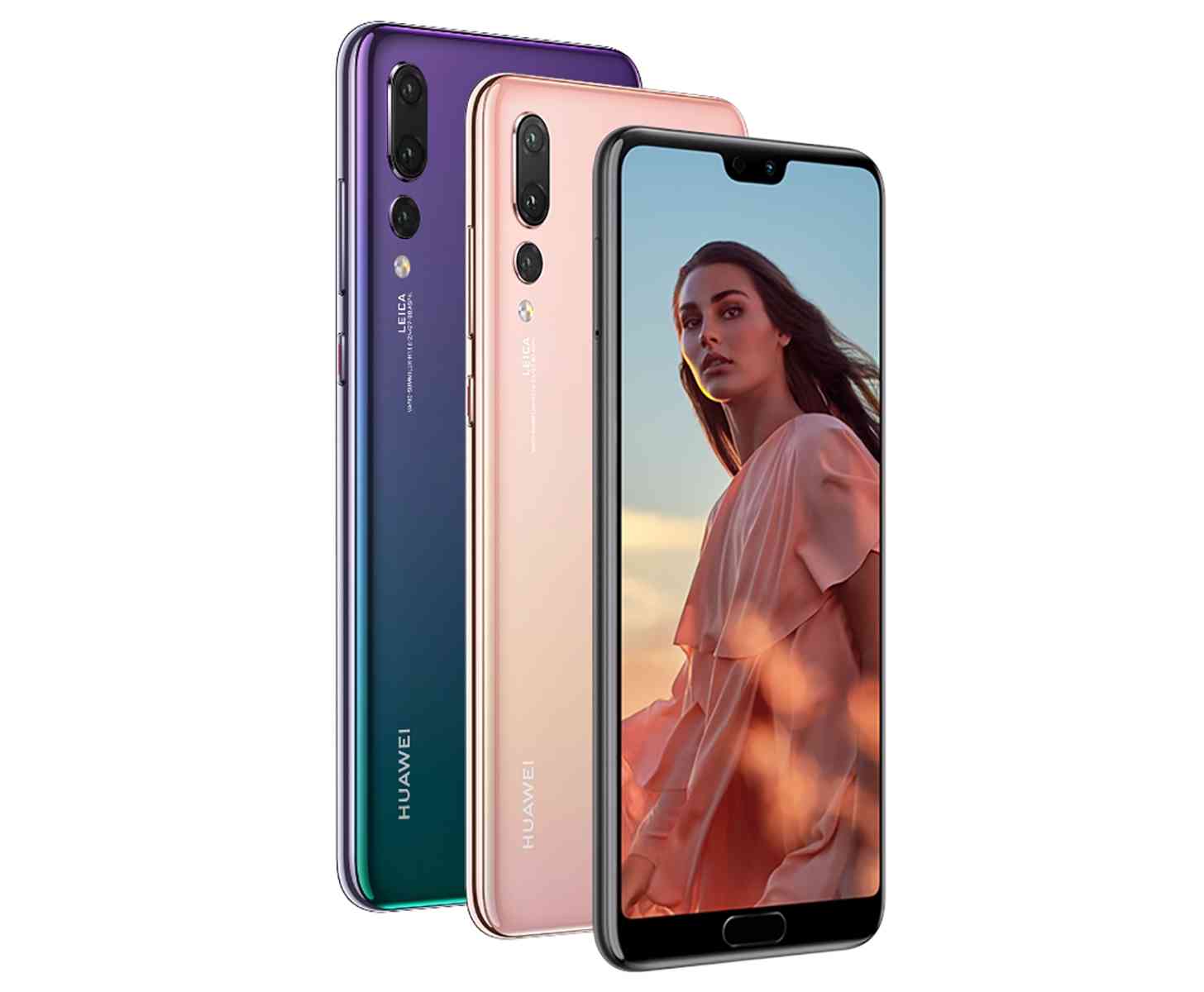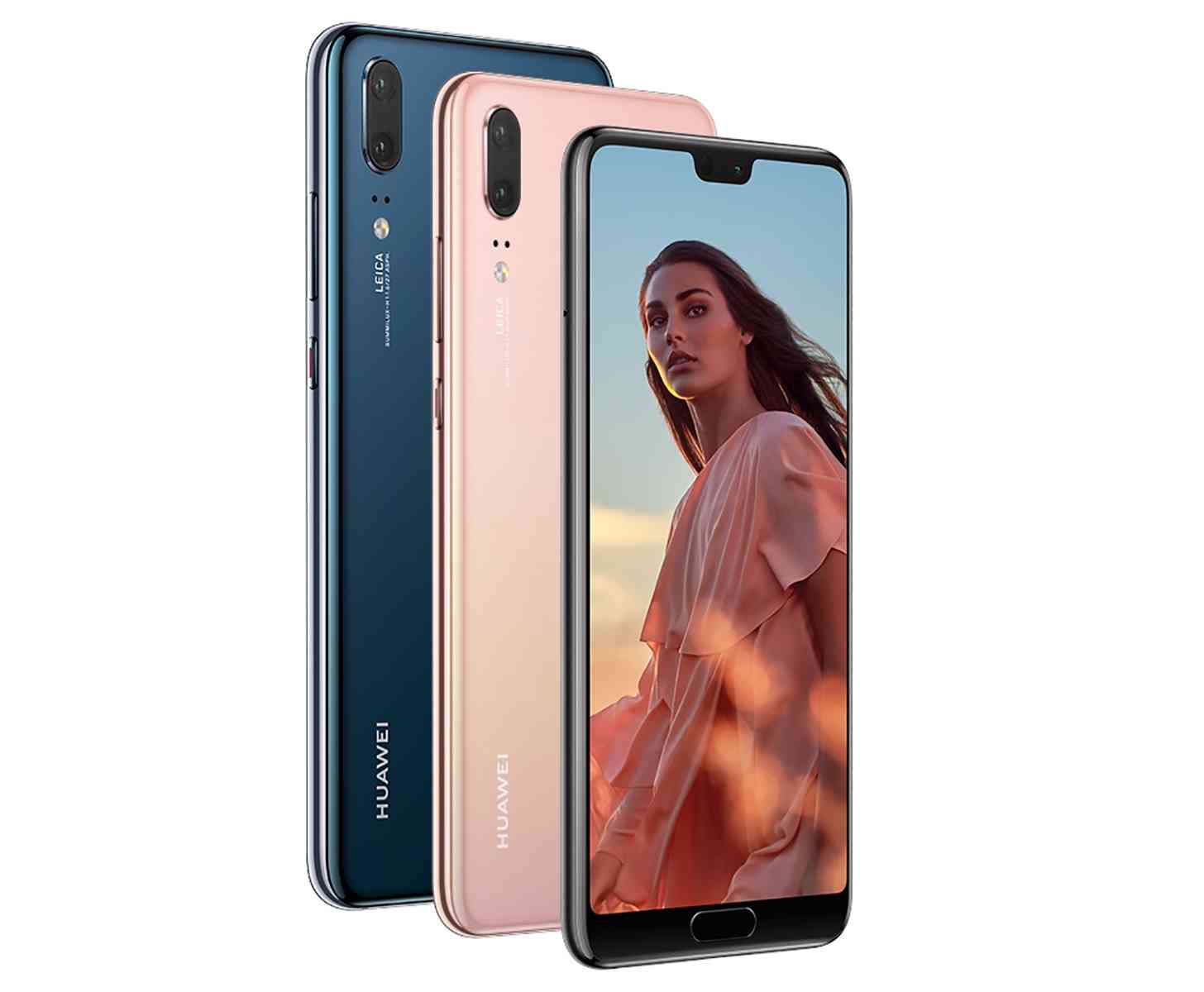
Right on schedule, Huawei has announced its newest flagship Android hardware.
The Huawei P20 and P20 Pro are now official. The two devices share a similar design, but there are some big hardware differences between them.
Perhaps the most notable feature of these phones is the Huawei P20 Pro's triple rear camera setup. The device one-ups all of the smartphones with dual rear camera setups, boasting a 40MP RGB camera with f/1.8 aperture, an 8MP camera with 3x telephoto lens and f/2.4 aperture, and a 20MP monochrome sensor with f/1.6 aperture.

Huawei crammed a Leica color temperature sensor for better color reproduction into the P20 Pro's camera setup, too, as well as a 5X Hybrid Zoom feature so you can zoom in on your images while retaining image quality and 960fps super slow motion video capture.
Around on the front of the P20 Pro is a 6.1-inch 2240x1080 OLED display complete with a notch up top. That notch is home to the P20 Pro's 24-megapixel selfie camera with f/2.0 aperture. Below the display is a fingerprint reader.
Inside the Huawei P20 Pro's shell is an octa-core Kirin 970 processor, 6GB of RAM, 128GB of storage, and a 4,000mAh battery that you'll recharge using USB-C. Also of note is that there's no 3.5mm headphone jack to be found here, but Huawei will include a USB-C headphones and a USB-C to 3.5mm adapter with its P20 Pro.

The standard Huawei P20 is equipped with a dual rear camera setup that includes a 12MP RGB sensor with f/1.8 aperture and 20MP monochrome sensor with f/1.6 aperture. It's also got laser focus and 960fps super slow motion video capture.
The front of the P20 is home to a smaller 5.8-inch 2244x1080 LCD screen, but it's got a fingerprint reader, 24MP selfie camera, and a notch like its bigger P20 Pro sibling. Inside there's a Kirin 970 processor, 4GB of RAM, 128GB of storage, a 3,400mAh battery, and a USB-C port. A pair of USB-C headphones and a USB-C to 3.5mm adapter is included with the P20 as well.
Both the Huawei P20 and Huawei P20 Pro come preloaded with Android 8.1 Oreo below Huawei's custom EMUI 8.1 user interface.
When it comes to pricing, the Huawei P20 will cost €649 ($804 USD), while the P20 Pro will cost €899 ($1,114 USD).
The Huawei P20 and P20 Pro look like solid Android flagships, offering nice designs with high-end specs. And while the triple rear camera setup of the P20 Pro may sound silly, it sounds like Huawei has come to compete in camera performance, with DxOMark giving the P20 Pro's camera performace a score of 109 while the P20 got a 102. Those are the highest scores that DxOMark has given out for a phone, beating even the Galaxy S9 Plus, Pixel 2, and iPhone X.
Now we'll have to wait for the P20 Pro and P20 to launch so we can spend some hands-on time with them and see for ourselves how they perform. What do you think of Huawe's new Android flagships? Are you thinking about picking one up to be your daily driver?